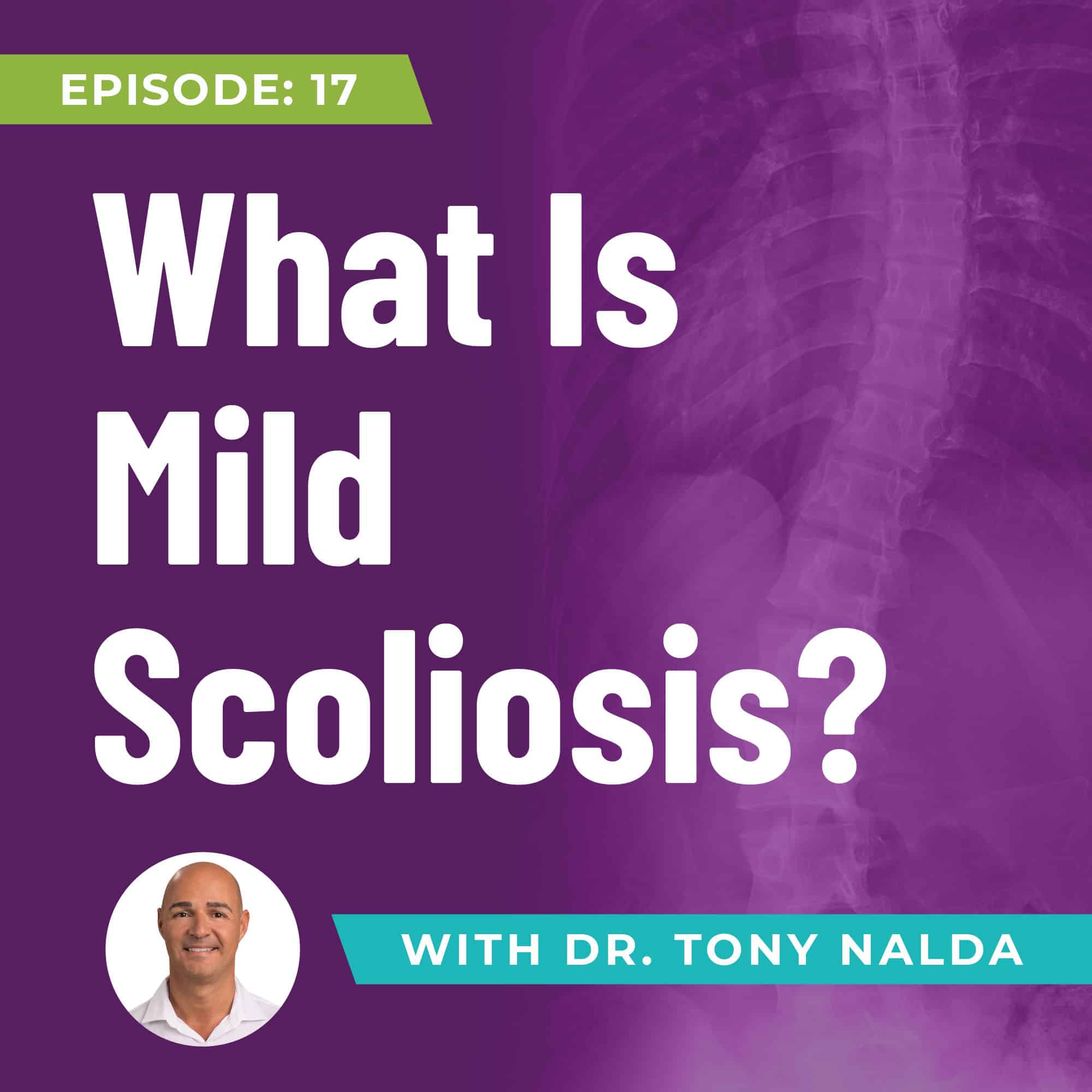Episode 17: What is Mild Scoliosis?
Scoliosis is measured in several categories:
- Mild Scoliosis
- Moderate Scoliosis
- Severe Scoliosis
What constitutes Mild Scoliosis?
Mild Scoliosis is a curvature less than 25 degrees but greater than 10.
If you went to the doctor and you were diagnosed with Mild Scoliosis, either as a child, adolescent, or an adult, and you asked them what should you do, they will tell you to do nothing.
Which makes no sense.
One thing that we do know is small curves eventually become big curves. What every big curve has in common is that it was once small.
Nobody can tell you how fast your curve will progress and nobody knows how big your curve is going to become.
But why risk it?
The idea with mild curvature, you would want to reduce or manage them now so they don’t become anything that you don’t want them to be, later on.
One reason that people don’t treat Mild Scoliosis is that they don’t feel any pain, especially in adolescent cases, so they don’t worry about it.
Unfortunately, the opposite is true in adult cases, they almost always feel pain and it has no relationship to the size of the curve.
When dealing with adult cases, people that are in their 40s to 60s who have severe cases, one thing that they will always say to Dr. Nalda is, “I wish somebody would have told me this will worsen, I would have done something more about it.”
The problem is most patients are told not to worry about it which is completely the wrong approach.
The good thing about Mild Scoliosis though, they respond well to treatments.
Patients have lots of options like therapy, rehab, and even bracing.
The treatment results are fantastic for mild cases but when you don't seek the proper treatment, this tends to progress overtime.
Want to know more? Check out Dr. Nalda’s podcast for more information.
Musicbed SyncID: MB01VVBE6IWWAI6
Podcast: Play in new window | Download
Subscribe: RSS
Dr. Tony Nalda
DOCTOR OF CHIROPRACTIC
After receiving an undergraduate degree in psychology and his Doctorate of Chiropractic from Life University, Dr. Nalda settled in Celebration, Florida and proceeded to build one of Central Florida’s most successful chiropractic clinics.
His experience with patients suffering from scoliosis, and the confusion and frustration they faced, led him to seek a specialty in scoliosis care. In 2006 he completed his Intensive Care Certification from CLEAR Institute, a leading scoliosis educational and certification center.
About Dr. Tony Nalda
 Ready to explore scoliosis treatment? Contact Us Now
Ready to explore scoliosis treatment? Contact Us Now








